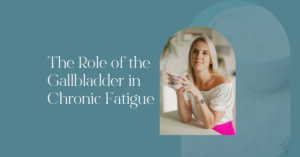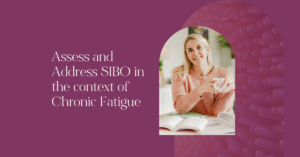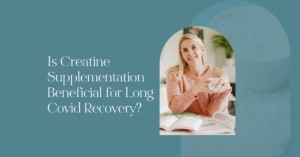What is Candida?
Candida is a type of yeast (a fungus) that naturally lives in small amounts in various parts of the body, such as the mouth, gut, and skin, without causing harm. However, when the balance of bacteria and yeast in the body is disrupted—often due to factors like a weakened immune system, antibiotic use, or high sugar intake—Candida can overgrow and cause infections.
The most common type of Candida infection is Candida albicans, and it can lead to conditions such as:
- Oral thrush: White patches in the mouth and on the tongue.
- Vaginal yeast infections: Itchy, irritated areas around the vagina.
- Skin infections: Red, itchy rashes, especially in warm, moist areas like armpits or between skin folds.
- Invasive candidiasis: A more serious infection where Candida enters the bloodstream and can affect organs, often occurring in those with weakened immune systems.
Candida infections are typically treated with antifungal medications, and prevention may involve maintaining a healthy diet, good hygiene, and managing any underlying health conditions.
Candida and Chronic Fatigue
Candida overgrowth can contribute to chronic fatigue through a combination of immune system suppression, toxin production, gut dysfunction, and inflammation. When Candida proliferates beyond its normal levels, it can lead to various symptoms that resemble chronic fatigue syndrome (CFS) or contribute to ongoing fatigue.
1. Toxin Production and Toxic Load:
Just like mould, candida produces mycotoxins (toxic substances), including acetaldehyde, which can enter the bloodstream and spread throughout the body. These toxins can have several harmful effects on the brain and nervous system. Chronic toxin exposure can overwhelm the body’s detoxification systems causing fatigue as the body struggles to eliminate them.
2. Immune System Stress and Inflammation:
Candida overgrowth activates a chronic immune response, leading to inflammation. Chronic low-grade inflammation in the body can be a major contributor to fatigue as energy is prioritised towards the immune system to resolve the infection. This can cause symptoms such as feelings of lethargy, muscle aches, and general fatigue.
3. Disruption of the Gut Microbiome:
Candida thrives in the gut, and its overgrowth can disrupt the gut microbiome, which plays a crucial role in overall health. Candida can damage the intestinal lining, leading to leaky gut syndrome, where the lining becomes permeable. This allows harmful particles (like undigested food, toxins, and pathogens) to enter the bloodstream, triggering immune responses and causing systemic inflammation, which can result in fatigue.
Candida can also interfere with nutrient absorption in the gut. A compromised gut lining or imbalance in gut flora can lead to deficiencies in essential vitamins and minerals (like B vitamins and magnesium), which are critical for energy production. Low levels of these nutrients can cause fatigue.
4. Blood Sugar Imbalances:
Candida thrives on sugar, and when it overgrows, it can lead to blood sugar imbalances. Candida fermentation of sugars can result in fluctuations in blood sugar levels, causing feelings of tiredness, weakness, or dizziness, especially after meals.
5. Chronic Infections and Systemic Spread:
Candida overgrowth can sometimes spread beyond the gut to other parts of the body, causing systemic Candida infections or contributing to chronic infections. This puts additional stress on the body’s resources and immune system, leading to fatigue as the body works harder to fight the infection.
6. Brain Fog and Cognitive Dysfunction:
Candida overgrowth can also lead to brain fog.This cognitive dysfunction can make you feel more tired as you struggle to focus and process information. Additionally, the neurotoxic effects of Candida’s byproducts may directly contribute to these symptoms.
7. Fatigue from Stress Response:
The body’s ongoing immune response to Candida, paired with inflammation and the stress of dealing with the infection, can create a vicious cycle.
In summary, Candida contributes to chronic fatigue through its effects on the immune system, gut health, inflammation, and toxin production. The resulting chronic inflammation, nutrient imbalances, blood sugar fluctuations, and hormonal disruptions all combine to create persistent fatigue. Addressing Candida overgrowth could be a worthwhile factor in someone whose system has been impacted.
Testing For Candida
How do you know if Candida could be a factor in health, energy and chronic fatigue symptoms? In clinical practice we can test for Candida in several different ways: stool, urine, blood testing or swab testing.
Stool Testing
A comprehensive stool test such as the GI Effects by Genova Diagnostics can assess Candida and other yeast cultures. Additionally this test also includes something called a “KOH screen” where a small amount of the sample is tested using a potassium hydroxide (KOH) solution. This can be a useful add on to the test to capture species that may not grow in culture on a petri dish.
Urine
A urine test such as an Organic Acid Test can test your urine for metabolites produced by yeast and fungal species, such as Candida. The Mosaic Laboratories offer an organic acids test that will assess for 9 different organic acids for yeast and mould. Markers 7,8,1,3 specifically are associated with Candida (yeast) and can indicate Candida build up:
- Arabinose
- Carboxycitric Acid
- Citramalic Acid
- 3-Oxoglutaric Acid
Blood
Blood testing can assess antibodies to candida, e.g. Candida IgM, IgA and IgG antibodies. When antibodies are present this can be suggestive that candida has become systemic and entered the blood stream. This is a form of endotoxemia which has been discussed in previous posts.
- IgG: Elevated levels indicate a past or ongoing infection
- IgA: Elevated levels indicate a superficial infection
- IgM: Elevated levels indicate an ongoing infection
Swabs
Oral and vaginal swabs are available that can test the oral and vaginal microbiome including the presence of yeast such as Candida.
Urine Mycotoxins
Just like Mould, Candida can produce mycotoxins and therefore the strategy we use for Candida vs Mould is very similar. It is also not uncommon for the two to come together and many people who experience Candida may have mould and vice versa.
The support strategy is normally centered around:
- Anti-Candida Diet
- Detoxifications and Drainage Support
- Using Binders
- Addressing Colonisation in the body
Anti-Candida Diet
The Anti-Candida Diet is a dietary approach aimed at reducing the overgrowth of Candida. The primary focus of the Anti-Candida Diet is to starve the Candida yeast by limiting foods that fuel its growth, particularly sugars and refined carbohydrates, as yeast thrives on sugar.
The diet typically includes the following principles:
1. Avoid Sugars and Refined Carbs:
- Eliminate foods that convert into sugar quickly, such as white bread, pasta, sugary snacks, and sodas.
- Avoid high-sugar fruits (e.g., bananas, grapes, dried fruit).
- No processed or refined sugars, including honey and maple syrup.
2. Eliminate High-Starch Foods:
- Reduce or eliminate starchy vegetables like potatoes, corn, and carrots, which can contribute to higher sugar levels in the blood.
3. Focus on Low-Sugar Fruits:
- Incorporate fruits with low sugar content, such as berries (strawberries, raspberries), lemons, and green apples in moderation.
- In some cases, fruits may need to be avoided completely.
4. Increase Protein and Non-Starchy Vegetables:
- Emphasize lean proteins like chicken, turkey, fish, and eggs.
- Fill your plate with non-starchy vegetables, such as leafy greens, cucumbers, zucchini, and bell peppers.
5. Include Healthy Fats:
- Healthy fats like olive oil, coconut oil, avocado, and nuts can be included in moderation to support overall health.
6. Herbal Antifungals:
- Certain herbs like garlic, oregano oil, and coconut oil are often recommended as they have natural antifungal properties.
7. Avoid Processed Foods:
- Avoid foods with artificial sweeteners, additives, and preservatives, as these can disrupt gut health.
8. Hydration:
- Drink plenty of water to support detoxification.
The Anti-Candida Diet is typically followed for a period of time (often a few weeks to months) while monitoring progress. Often a ketogenic diet lends itself well to an Anti-Candida approach.
Supporting The Immune System
In challenging cases of Candida, the infection enters the blood stream and can interact with Toll-like receptors (TLRs) which initiates a significant inflammatory response. Over time this can weaken the immune system and be a cause of immune compromise, leading to increased susceptibility to ongoing infections and/or viral reactivation.
In this case the immune system may need additional support, while also addressing the Candida infection itself.
70% of our immune system is located in and around the gut and therefore, rebalancing the digestive system, which will include addressing intestinal permeability, can be a good starting point.
The digestive system should be addressed from North to South depending on the individual imbalances with which someone presents. This is something that I cover in more detail in my Gut Health Mini Course. A brief summary includes:
- Supporting the nervous system and vagal tone for proper digestion
- Adequate chewing; 30-40 chews per mouthful
- Ensure stomach acid production is adequate; this will impact digestive pH which influences the balance of bacteria in the gut
- Ensure adequate production of pancreatic enzymes; low levels may be impacted by the health of the small intestine which includes small intestinal bacterial overgrowth (SIBO), intestinal permeability, pancreatic health and parasympathetic tone
- Ensure healthy gallbladder function
- Healthy Microbiome which means a good balance of bacteria in the gut. A common cause of Candida overgrowth is frequent antibiotic use where commensal bacteria are reduced and this creates an environment where opportunistic species can thrive.
All of the above will be supportive and additionally we want to address intestinal permeability specifically with supportive foods and supplements which include:
- L-glutamine
- Butyrate
- Vitamin D
- Vitamin A
- Bone Broth
General Support For A Compromised Immune System
There are some basic principles which apply to Chronic Fatigue Recovery whether someone has a compromised immune system or not. However, these same principles will also be supportive for someone with Candida and/or immune compromise. They include:
- Sleep
- Blood Sugar Balance
- Addressing Macronutrient Deficiencies (typically not eating enough protein and enough of the right types of fats).
- Addressing Micronutrient Deficiencies such as vitamins ADEK, zinc, iron, copper, B vitamins and Vitamin C
- Optimal movement routine
- Nervous System Self Care
This may sound pretty basic and obvious but you would be surprised how many clients I see on complex supplement protocols who have not addressed these basic concepts. Just eating better, sleeping better, moving a little and supporting the nervous system can go a long way to improving immune function).
Additionally on a case by case basis we may want to consider:
- Adrenal Function
- Sex Hormones
- Other ongoing infections e.g. bacteria, parasites, yeast and mould
- Overtraining which in Chronic Fatigue Land is “Poor Pacing”
- Smoking
- Drugs and alcohol use
- Eating disorders
Anti-Microbial Herbs & Binders
We can use antimicrobial herbs to address infections such as Candida, as well as other infections such as bacterial overgrowth, parasites and mould colonisation. The mistake that many people make is they jump into antimicrobial support too quickly before preparing the body.
We first want to stabilise the body and build up resilience. We want to get the digestive system working well, address nutritional deficiencies and make sure that we can clear toxins through healthy detoxification and drainage pathways.
Once these things are in place we can consider adding in a binder and adding in a varied antimicrobial support plan.
Binders
Binders are the garbage men for the body – they help take out the trash.. The liver will transform toxins and send them to the gut in bile so that they can be excreted. However, sometimes these toxins stick to bile and they cannot be excreted from the body. This means that as bile is recycled it still holds the bound toxins and carries them back to the liver, this adds to the body’s total toxic load. Binders are able to bind the toxins in the bile so that the toxins are carried out in the faeces.
I like to add binders before adding antimicrobials because it is possible that as we use herbs in the gut, the body will become temporarily more toxic – which is why we want the detox and drainage pathways working well.
Some people can be sensitive to binders so sometimes they need to be introduced very slowly, sometimes starting with a capsule or sprinkle of a capsule every 3 days.
I often recommend activated charcoal because it is generally well tolerated. Other options may include:
- Bentonite Clay
- Chlorella
- N-Acetyl Cysteine
- Saccharomyces Boullardi
- Popolmannan
- Zeolite
- L.rhamnosus
- Aloe
- Humic and Fulvic Acid
Once binders are introduced and tolerated, the next step would be to consider antimicrobial herbs
Antimicrobial Herbs
Before starting antimicrobial support we want to make sure that we have included support for the microbiome and support for the intestinal barrier. Then we can introduce anti-Candida Nutraceutical such as:
- Uva Ursi
- Caprylic Acid
- Undecylenic Acid
- Pau d’arco
- Cat’s claw
- Oregano
As I work more and more with sensitive individuals my preference is to use alcohol free tinctures of single ingredient compounds which can be introduced slowly, one drop at a time. It can take a long time to build up the dosage and this means that the individual may need to take these supplements for a long time, following a “low and slow” strategy.
In cases where the individual is more robust, I will use high doses of combination products which may also have anti-parasitic and antibacterial properties. I have summarised these in the table below:
| Preparatory | Antimicrobials | ||||
| General Support | Microbiome Support | Intestinal Barrier | Anti-Candida | Anti-Bacterial | Anti-Parasitic |
| Sleep Blood Sugar Balance Nervous System Hormone Balance Movement Protein and Fat Micronutrient Deficiencies | Butyrate Fibre Probiotics Saccharomyces Boullardi | L-glutamine Zinc Carnosine Butyrate DGL Slippery Elm Marshmallow Extract | Uva Ursi Caprylic Acid Undecylenic Acid Pau d’arco Cat’s claw Oregano | Wormwood Black Walnut Garlic Olive Leaf Barberry | Goldenseal Barberry Grapeseed Chinese Goldthread |
Herbs may need to be continued for anywhere between 4 weeks to 6 months or more depending on the case. This is where it can be helpful to work with a practitioner who can monitor your progress and advise on your specific needs.
After a period of time it can be helpful to add in biofilm disrupting compounds such as N-Acetyl Cystiene, Monolaurin, Colloidal Silver, Nattokinase, Serratiopeptidase, Trypsin
Biofilm is a matrix that sticks to tissues in the body, it is made up of protein, lipids, polysaccharides and DNA. It acts like a protective coating that acts as a barrier against antimicrobial agents and immune responses. The best known type of biofilm is dental plaque.
Sensitive people may react to biofilm disruptors because it can increase the immune system’s reaction when organisms are disturbed from their biofilm.
Vaginal Support
In addition to oral antimicrobials, vaginal suppositories can be beneficial to support the vaginal microbiome. Here are a few possibilities:
Conclusion
Addressing Candida can be simple in some cases, however, if people who are very unwell with Chronic Fatigue and/or very sensitive, it can be complicated. However, if it is something that is impacting your system, it is definitely worth taking the time to address.









